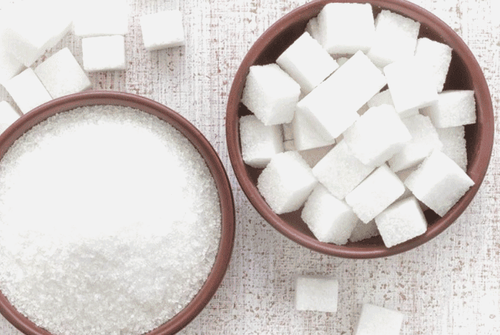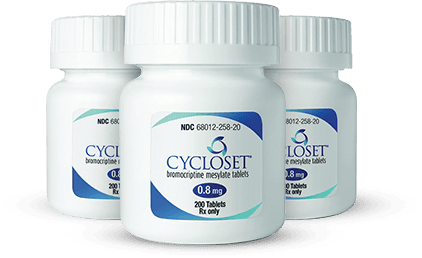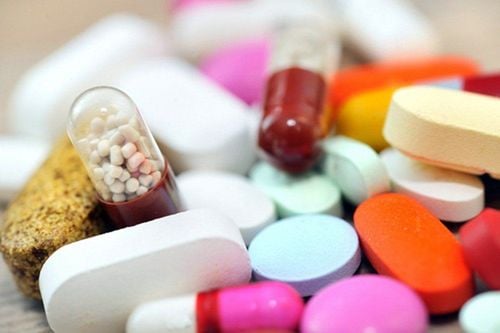This is an automatically translated article.
Consuming a lot of sugar increases the risk of type 2 diabetes. Therefore, people at risk need to cut their sugar consumption in addition to a healthy diet and exercise.
1. Can diabetics eat sugar?
People who regularly drink sugary drinks have an approximately 25% higher risk of developing type 2 diabetes. Drinking just one sugary beverage a day can increase the risk of diabetes by 13%, independent of weight.In addition, the countries that consume the most sugar also have the highest rates of type 2 diabetes, while those with the least sugar consumption have the lowest rates.
Sugar increases the risk of diabetes both directly and indirectly.
Sugar directly increases the risk due to the effect of fructose on the liver, causing fatty liver, inflammation and local insulin resistance. These effects trigger abnormal insulin production in the pancreas and increase the risk of type 2 diabetes. Sugar indirectly increases the risk of diabetes by causing weight gain and body fat. - are risk factors for diabetes. Additionally, animal studies show that eating a lot of sugar can disrupt the signaling of leptin, a hormone that promotes feelings of fullness, leading to overeating and weight gain.
To reduce the negative effects of high sugar consumption, WHO recommends getting no more than 10% of your daily calories from refined sugars.

Đường làm tăng nguy cơ mắc bệnh tiểu đường
2. How is sugar metabolized in the body?
Table sugar containing sucrose is made from sugar beet or sugar cane. Sucrose is made up of one glucose molecule and one fructose molecule linked together.
When sucrose enters the body, glucose and fructose molecules are broken down by enzymes in the small intestine before being absorbed into the bloodstream.
This raises blood sugar and signals the pancreas to release insulin. Insulin moves glucose out of the blood vessels and into cells, where it is converted into energy.
A small amount of fructose is also absorbed by cells for energy, most of which is taken to the liver to be converted into glucose for energy or as fat for storage.
Eat more sugar than the body needs, the excess sugar will be converted into fatty acids and stored as body fat.
Because fructose can be converted to fat, eating a lot of sugar tends to increase triglyceride levels, which can increase the risk of cardiovascular disease and fatty liver.
Accordingly, eating a lot of fructose also contributes to increased uric acid levels in the blood. If these uric acid crystals are deposited in the joints, it can cause gout.

Tiêu thụ nhiều đường làm tăng nguy cơ tích mỡ thừa
3. Can diabetics eat fruits and vegetables containing sugar?
Natural sugars are sugars that exist in fruits and vegetables and are unprocessed. These sugars contain more fiber, water, and antioxidants, so they are digested and absorbed more slowly, and are less likely to cause blood sugar spikes.
Fruits and vegetables contain much less sugar than processed foods, making it easier to control sugar consumption. For example, with the same volume, a peach has about 8% sugar, while a Snickers bar contains 50% sugar.
Some studies have found that eating at least one serving of fruit per day reduces the risk of diabetes by 7–13% compared to eating no fruit.
4. Can diabetics drink fruit juice?
Some studies have found a link between fruit juice consumption and diabetes risk, possibly due to juices being high in sugar and low in fiber. However, more research is still needed.

Nước ép trái cây còn nhiều mối liên quan đến bệnh tiểu đường
5. Can diabetics eat honey, syrup?
Some natural sweeteners, such as honey and maple syrup, are often not highly processed such as table sugar, corn syrup, agave syrup, coconut sugar and cane sugar.
They are still a relatively pure source of sugar and contain almost no fiber. Therefore, should be consumed in moderation, preferably less than 10% of daily calories.
6. Do artificial sweeteners increase diabetes risk?
Artificial sweeteners are man-made sweet substances that cannot be converted into calories. However, it still increases the risk of insulin resistance and type 2 diabetes.
Drinking just one can of soda a day can increase the risk of type 2 diabetes by 25–67%, compared with not drinking soda at all. .
Studies come to the following conclusions about the link between artificial sweeteners and diabetes:
Artificial sweeteners found in foods increase cravings for sweets, leading to more sugar consumption , which causes weight gain and increases the risk of diabetes. Artificial sweeteners increase calorie consumption, because the brain associates artificial sweeteners with no calories. Artificial sweeteners can change the type and amount of bacteria that live in the large intestine, causing glucose intolerance, weight gain, and diabetes.

Chất tạo ngọt có trong nhiều loại đồ uống
7. Other risk factors for diabetes
In addition to sugar, there are other factors that increase the risk of diabetes such as:
Body weight: Obesity is one of the main risk factors for type 2 diabetes. Reduce the risk of diabetes by 5-10% of body weight. Exercise: People with a sedentary lifestyle are twice as likely to develop type 2 diabetes than active people. Just 150 minutes/week of moderate activity can reduce this risk. Smoking: Smoking 20 or more cigarettes a day increases the risk of diabetes 2 times. Sleep apnea: As a risk factor for diabetes. Heredity: The risk of developing type 2 diabetes is 40% if one of the parents has it and nearly 70% if both parents have it. Consuming a lot of sugar increases the risk of type 2 diabetes. Therefore, you should consider the amount of sugar you put into your body and maintain a suitable diet. Besides, you should also regularly exercise, change your lifestyle to keep your body healthy.
Vinmec International General Hospital is the address for examination, treatment and prevention of diseases. When performing the examination process at Vinmec, customers will be welcomed and used modern facilities and equipment along with perfect medical services under the guidance and advice of experts. Good doctors, well-trained both at home and abroad.
Please dial HOTLINE for more information or register for an appointment HERE. Download MyVinmec app to make appointments faster and to manage your bookings easily.
Reference source: healthline.com













